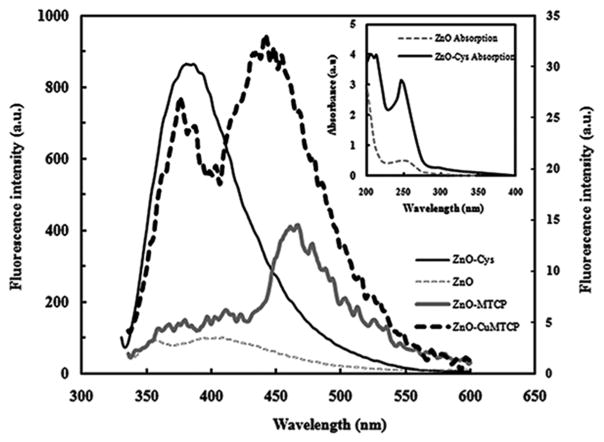FIG. 2.
Fluorescence spectra of uncoated ZnO, ZnO-Cys, ZnO-MTCP, and ZnO-CuMTCP nanoparticles. Quenching of the fluorescence spectrum of ZnO-Cys around 370 nm showed that when it was conjugated to MTCP or CuMTCP, then an attachment between porphyrins and ZnO-Cys nanoparticles should be effectively occurred to show FRET phenomenon. Conjugation of the porphyrins produced additional bands in the vicinity of 470 nm. This was mainly attributed to the fine quality of the synthesized ZnO-porphyrin. The fluorescence intensity of ZnO-MTCP and ZnO-CuMTCP are shown on the right-hand side of the secondary axis since they were much lower than that of ZnO and ZnO-Cys (a.u. denotes arbitrary units). Excitation wavelength was 325 nm. Inset: Absorption spectra of ZnO and ZnO-Cys nanoparticles. Absorbance of ZnO-Cys nanoparticles was increased, indicating smaller size of nanoparticles acting as a better quantum dot. (a.u. denotes absorbance units).

